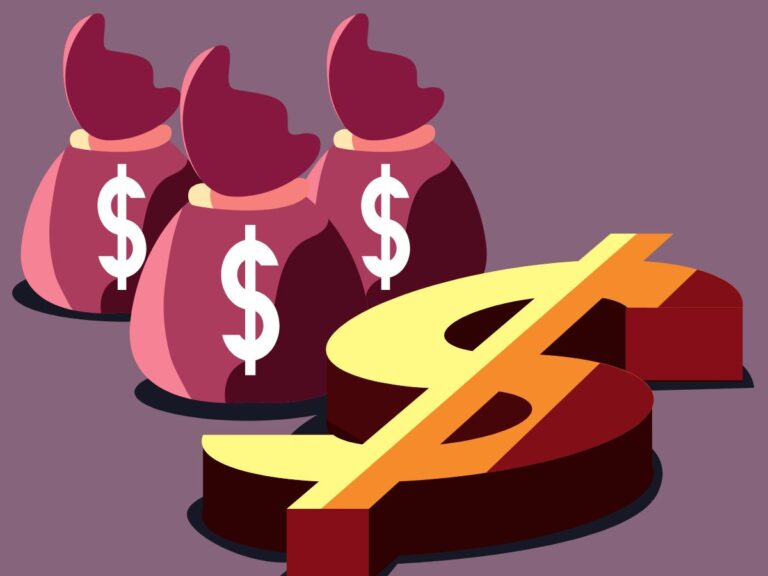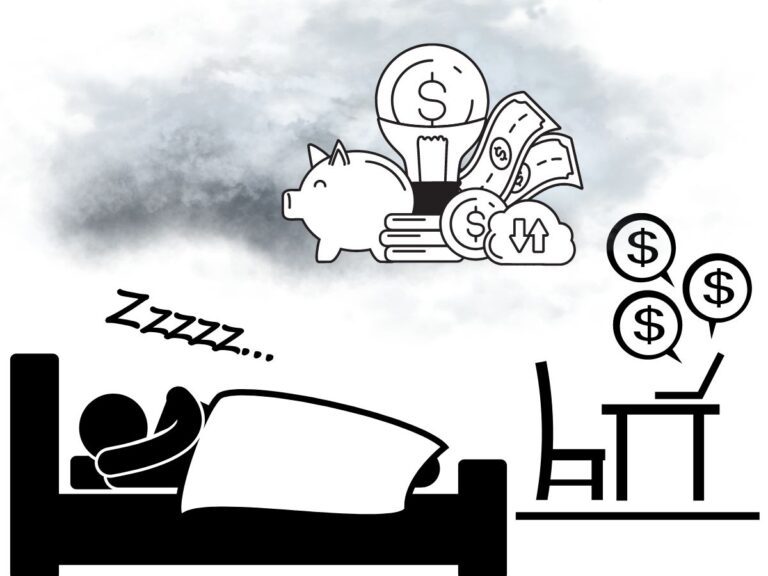How Bloggers Make Money The Smartest Strategies To Start Today
Whether you’re a seasoned blogger or starting out, it’s necessary to understand how bloggers make money. This blog post will dive into how bloggers can monetize their content and turn their passion into a profitable career.
First, let’s start by discussing the importance of understanding how bloggers make money. The blogosphere is constantly evolving and growing, and as a result, new monetization opportunities arise every day. Bloggers can increase their income and grow their brand by staying on top of the latest trends and strategies. Additionally, understanding how to monetize your blog can help you to create a sustainable and long-term career as a blogger.
In this post, we’ll cover the following main points:
- The various methods of making money as a blogger include advertising, selling products, and offering services.
- Strategies for successfully monetizing your blog include building an audience, creating high-quality content, and developing a monetization plan.
- Common challenges that bloggers face when trying to monetize their content and how to overcome them.
By the end of this post, you should have a solid understanding of how bloggers make money and are equipped with the knowledge and tools you need to start monetizing your blog. So, let’s dive in!

Understanding the Various Methods of Making Money as a Blogger
As a blogger, there are several ways to monetize your content and turn your passion into a profitable career. In this section, we’ll discuss the three main methods of making money as a blogger: advertising, selling products, and offering services. Let’s start by talking about advertising.
Advertising:
Advertising is a popular and widely-used method of monetization among bloggers. In its simplest form, advertising involves selling ad space on your blog to companies or individuals who want to promote their products or services. Bloggers can take advantage of several different types of advertising, including display ads, sponsored posts, and affiliate marketing.
Display Ads:
Display ads are the traditional type of advertising that you see on most websites. They typically take the form of banner ads that are placed on the sidebars or header/footer sections of a blog. For example, you might see a display ad for a new clothing line on the sidebar of a fashion blog. Bloggers earn money from display ads by charging a fee for each ad placement or getting a percentage of the ad revenue generated by clicks or impressions.
Sponsored Posts:
Sponsored posts are another popular form of advertising for bloggers. As the name suggests, sponsored posts involve writing posts that promote a specific product or service in exchange for payment.
For example, a food blogger might write a post about a new kitchen gadget and include an affiliate link to purchase the product. Sponsored posts are an excellent way for bloggers to earn money and promote products that align with their interests and niche.
Affiliate Marketing:
Affiliate marketing is a form of advertising that involves promoting a product and earning a commission for any sales generated from clicks on your affiliate link.
For example, if you’re a travel blogger, write a post about your favorite travel gear and include an affiliate link to purchase the recommended products. If someone clicks on your link and makes a purchase, you’ll earn a percentage of the sale.

Advantages and Disadvantages of Advertising as a Source of Income for Bloggers:
Advantages:
- Passive Income: Advertising can be a great source of passive income for bloggers. Once you have set up your ads or affiliate links, you can earn money even when you’re not actively working on your blog.
- Flexibility: Bloggers can choose from various types of advertising, allowing them to find a monetization method that works best for their audience and niche.
- Broad Reach: Advertising can help bloggers reach a wider audience and promote their brand to potential customers.
Disadvantages:
- Intrusive to the User Experience: Overly aggressive or irrelevant ads can turn off readers and harm the user experience on a blog.
- Competition: With so many bloggers using advertising as a source of income, the competition for ad space can be intense.
- Revenue Dependent on Traffic: The amount of money you can earn from advertising is directly tied to the amount of traffic you receive on your blog. This can make advertising a less stable source of income compared to other monetization methods.
Advertising can be an excellent way for bloggers to monetize their content and earn passive income. However, it’s vital to approach advertising in a way that aligns with your brand and enhances the user experience for your readers. By carefully considering the advantages and disadvantages of advertising, bloggers can make informed decisions about the best monetization methods for their blogs.

Selling Products:
Selling products is another popular method of monetizing a blog. This involves offering products for sale to your audience through your website or a third-party platform like Etsy or Amazon. There are several different types of products that bloggers can sell, including digital products, physical products, and courses.
Definition of Selling Products: Selling products refers to offering a product for sale to your audience. This can include physical products, digital products, or services. Bloggers can monetize their blogs and turn their passion into a profitable business by selling products.
Types of Products That Can Be Sold:
- Digital Products: Digital products are delivered and consumed in a digital format. This can include ebooks, printables, online courses, and software. For example, a food blogger might sell a collection of their favorite recipes as an ebook.
- Physical Products: Physical products are tangible products that can be held or used. This can include products like clothing, jewelry, or home goods. For example, a fashion blogger might sell their own line of clothing or accessories.
- Courses: Courses are educational programs that teach a specific skill or provide information on a particular topic. For example, a photography blogger might sell a course on how to take better photos.

Advantages and Disadvantages of Selling Products as a Source of Income for Bloggers:
Advantages:
- Control Over Your Brand: By selling your own products, you have complete control over the branding, pricing, and marketing of your products.
- Increased Income Potential: Selling products can significantly increase your income potential, as you earn money from each sale.
- Building a Community: By selling products, you can connect with your audience and build a loyal community of customers who are invested in your brand.
Disadvantages:
- Time-Consuming: Creating and selling products can be time-consuming, especially if you’re offering physical products that require shipping and handling.
- Cost of Production: Producing physical products can be expensive, especially if you order small quantities.
- Marketing and Promotion: Selling products requires marketing and promotion to reach your target audience and generate sales.
Selling products can be an excellent way for bloggers to monetize their blogs and build a profitable business. However, it’s essential to consider the advantages and disadvantages before jumping into product sales. By evaluating their goals and resources, bloggers can make informed decisions about the best monetization methods for their blogs.

Services:
Offering services is another way for bloggers to monetize their blogs. This involves offering your expertise and skills to others in exchange for payment. Bloggers can provide various services, including consulting, coaching, and writing.
Definition of Offering Services:
Offering services refers to providing a service to others in exchange for payment. This can include a wide range of skills and expertise, from consulting and coaching to writing and design. Bloggers can leverage their knowledge and experience to earn money from their blogs by offering services.
Types of Services That Can Be Offered:
- Consulting involves offering advice and guidance to clients on a specific topic or issue. For example, a marketing blogger might offer to consult services to help businesses with their marketing strategies.
- Coaching involves working with clients to help them achieve their goals and reach their full potential. For example, a personal development blogger might offer life coaching services to help others improve their relationships or career.
- Writing involves creating content for clients, such as blog posts, articles, or copywriting. For example, a travel blogger might offer writing services to travel companies or magazines.

Advantages and Disadvantages of Offering Services as a Source of Income for Bloggers:
Advantages:
- Direct Control Over Your Earnings: When you offer services, you have direct control over your earnings and can set your own prices based on your skills and experience.
- Ability to Offer a Unique Service: By offering services, you can differentiate yourself from other bloggers and provide a unique value proposition to your audience.
- Building Relationships with Clients: Offering services can help you build strong relationships with clients and create a loyal following.
Disadvantages:
- Time-Intensive: Offering services can be time-intensive, as you need to invest time and energy into working with each client.
- Limited Income Potential: The amount of money you can earn from services is limited by the number of clients you have and the amount of time you’re willing to invest.
- Marketing and Promotion: To attract clients, you must effectively market and promote your services.
Offering services can be an excellent way for bloggers to monetize their blogs and earn money from their expertise and skills. However, it’s essential to consider the advantages and disadvantages before considering service offerings. By evaluating their goals and resources, bloggers can make informed decisions about the best monetization methods for their blogs.
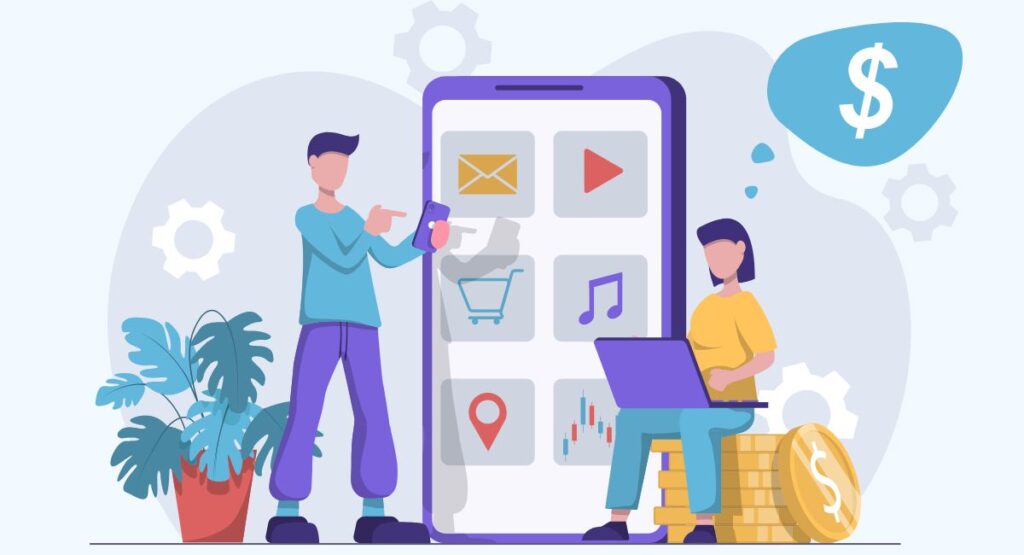
Monetizing Your Blog: Strategies for Success:
Once you’ve decided on the best monetization method for your blog, it’s time to start implementing your strategies. One key component of successfully monetizing your blog is building an audience.
Building an Audience:
Your audience’s size and engagement can significantly impact your ability to monetize your blog. A large, engaged audience gives you a pool of potential customers and supporters who can help you achieve your monetization goals.
Importance of Having a Large, Engaged Audience:
A large, engaged audience provides several benefits, including:
- Increased Earnings Potential: The more people who are interested in your blog, the more potential customers you have.
- Better Engagement: When your audience is engaged with your content, they are more likely to interact with you and share your content, which can help you reach even more people.
- Increased Brand Awareness: A large, engaged audience can help you build brand awareness and increase the visibility of your blog.

Ways to Grow Your Audience:
There are several strategies you can use to grow your audience, including:
- SEO: Search engine optimization (SEO) involves optimizing your blog content to rank higher in search engine results. This can help you reach a wider audience and increase your visibility online.
- Social Media: Social media platforms are a great way to reach a large, engaged audience. You can connect with potential readers and build a following by creating and sharing content on platforms like Facebook, Twitter, and Instagram.
- Email Marketing: Email marketing involves sending targeted messages to your subscribers to promote your blog and engage with your audience. This can be a powerful way to build a relationship with your audience and drive traffic to your blog.
Best Practices for Engaging with Your Audience:
To build and maintain an engaged audience, there are several best practices you can follow, including:
- Consistently Creating High-Quality Content: By consistently producing high-quality content, you can keep your audience engaged and coming back for more.
- Engaging with Your Audience: Engage with your audience by responding to comments, answering questions, and creating opportunities for interaction.
- Providing Value: Provide value to your audience by offering valuable information, insights, and resources.
Building an audience is a critical component of monetizing your blog successfully. By following best practices for growing and engaging with your audience, you can create a large, engaged following that can help you achieve your monetization goals. Whether selling products, offering services, or using advertising to monetize your blog, having a large, engaged audience is essential for success.

Creating High-Quality Content:
Creating high-quality content is one of the most critical factors in monetizing your blog. This content should be valuable, engaging, and appealing to your target audience.
By producing this content, you can establish yourself as an authority in your niche, build a large, engaged audience, and ultimately increase your earnings potential.
Importance of Producing Valuable, Engaging Content:
Producing valuable, engaging content is crucial for several reasons, including:
- Attracting and Retaining an Audience: By creating high-quality content that appeals to your target audience, you can attract and retain a large, engaged following.
- Building Credibility and Trust: When you produce valuable, engaging content, you build credibility and trust with your audience, which can help you monetize your blog more effectively.
- Improving SEO: High-quality content can also help improve your search engine rankings, making it easier for potential readers to find your blog.
How to Create Content That Appeals to Your Target Audience:
To create content that appeals to your target audience, you need to understand their needs, interests, and pain points. This can involve researching your target audience, asking questions, and creating surveys to gather data.
Once you understand your target audience, you can create content that addresses their needs and interests. This can include writing blog posts, making videos, or producing podcasts that provide valuable information and insights.
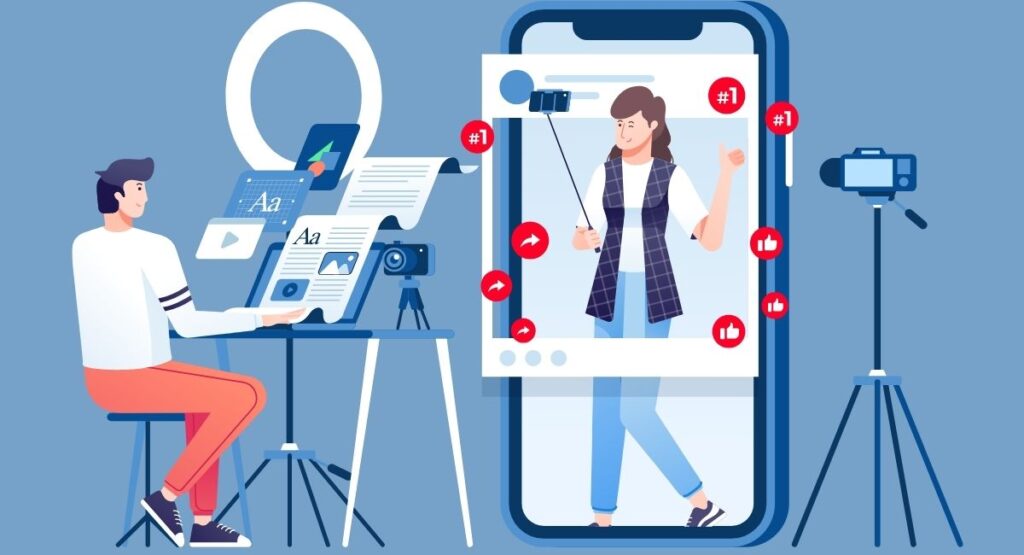
Content Formats That are Most Effective for Monetization:
Several content formats are practical for monetization, including:
- Blog Posts: Blog posts are a versatile and effective way to share information with your audience. They can be used to provide insights, share stories, and promote products or services.
- Videos: Videos can be a powerful way to engage with your audience and promote your blog. Whether creating tutorials, product demos, or simply sharing your thoughts, videos can help you build a large, engaged following.
- Podcasts: Podcasts are another popular content format that can help you build a large, engaged audience. By producing high-quality podcasts that provide valuable information and insights, you can establish yourself as an authority in your niche and attract a loyal following.
Creating high-quality content is a crucial component of monetizing your blog successfully. By producing valuable, engaging content that appeals to your target audience, you can build a large, engaged following and increase your earning potential. Whether you’re using blog posts, videos, or podcasts, you must understand your target audience and create content that provides value and addresses their needs and interests.
Developing a Monetization Plan:
Having a clear strategy for monetizing your blog is critical to achieving success. A well-designed monetization plan will help you identify your earning potential, determine the best ways to monetize your blog and set realistic goals for your income.

Importance of Having a Clear Strategy for Monetization:
Having a clear strategy for monetization is essential for several reasons, including:
- Increased Earnings Potential: A well-designed monetization plan can help you maximize your earnings potential by focusing your efforts on the most profitable monetization methods.
- Better Understanding of Your Blog’s Potential: By developing a monetization plan, you can better understand your blog’s earning potential, which can help you make informed decisions about how to monetize your blog.
- Improved Focus: A monetization plan can help you focus your efforts and prioritize your monetization strategies, allowing you to achieve your goals more quickly.
Steps to Creating a Successful Monetization Plan:
Creating a successful monetization plan involves several steps, including:
- Identify Your Target Audience: Understanding your target audience is critical to developing a successful monetization plan. You need to know your target audience, their needs and interests, and what type of content they are most likely to engage with.
- Determine Your Earning Potential: Your blog’s earning potential must be determined. This can involve researching your niche, analyzing your traffic and engagement metrics, and assessing your monetization methods.
- Choose the Best Monetization Methods: Based on your target audience and earning potential, you can choose the best monetization methods for your blog. This might involve advertising, selling products, offering services, or combining these methods.
- Set Realistic Goals: Once you have identified the best monetization methods for your blog, you need to set realistic goals for your income. This will help you measure the success of your monetization efforts and make adjustments as needed.
- Implement and Test Your Monetization Strategies: The final step in developing a monetization plan is to implement and test your monetization strategies. This may involve placing ads on your blog, offering products or services, or engaging with your audience to build a large, engaged following.

How to Measure the Success of Your Monetization Efforts:
Measuring the success of your monetization efforts is an integral part of developing a successful monetization plan. This can involve tracking your earnings, monitoring your audience engagement, and analyzing your traffic and engagement metrics.
To measure the success of your monetization efforts, you should regularly review your earnings, traffic, and engagement metrics. This will help you identify areas for improvement and make adjustments as needed.
For example, if you’re using advertising as a monetization method, you can track your earnings from ad revenue, measure the click-through rates on your ads, and monitor your audience engagement to determine how well your ads perform.
Developing a monetization plan is critical to achieving success as a blogger. By understanding your target audience, determining your earning potential, choosing the best monetization methods, and regularly measuring the success of your monetization efforts, you can create a successful monetization plan that helps you maximize your earnings potential and achieve your income goals.
Common Challenges and How to Overcome Them
One of the biggest challenges that bloggers face when trying to make money is competition. With so many bloggers, it can be tough to stand out and differentiate yourself from others in the same niche. However, you can use a few strategies to overcome this challenge and stay ahead of the competition.
First, it’s essential to understand the competitive landscape and what sets you apart from other bloggers. Are you offering a unique perspective or voice? Are you writing about topics that are covered less by others? By understanding your strengths and what sets you apart, you can use this to your advantage and differentiate yourself from others in the same niche.
Another strategy is to stay up-to-date on industry trends and news. Follow other bloggers in your niche and subscribe to industry-specific newsletters to stay informed. This will help you stay ahead of the curve and ensure that your content is relevant and current.
Additionally, it’s essential to focus on building relationships with your audience. Connect with your readers through comments, social media, and email newsletters. Show your readers that you value their opinions and are dedicated to providing valuable content. By fostering a strong relationship with your audience, you’ll be able to build a loyal following that will continue to support you even as the competition grows.
Finally, it’s essential to be open to feedback and willing to pivot when necessary. If your monetization strategy isn’t working, try something new. Experiment with different methods and adjust your approach based on what’s working and what’s not. By staying ahead of the competition, building relationships with your audience, being open to feedback, and pivoting when necessary, you’ll be well on your way to success as a blogger.

Overcoming a Monetization Plateau
As a blogger, reaching a point where your income seems to level off is common, also known as a monetization plateau. This can be a frustrating experience, but there are several strategies you can use to overcome it and continue to grow your income. First, it’s essential to understand the reasons behind a monetization plateau. Are you reaching the maximum number of people interested in your niche?
Have you exhausted all the monetization methods available to you? By identifying the root cause of your plateau, you’ll be better equipped to overcome it. One strategy to overcome a monetization plateau is to diversify your income streams. Instead of relying on just one monetization method, consider incorporating multiple ways into your plan.
For example, you could continue advertising and selling digital products or services. By having multiple streams of income, you’ll be able to reach a wider audience and increase your overall earnings.
Another strategy is to focus on increasing the value you provide to your audience. This could mean producing higher-quality content, offering more in-depth courses or services, or partnering with other bloggers or businesses to offer joint products or services. By increasing the value you provide to your audience, you’ll be able to attract more readers and grow your income.
Finally, it’s essential to regularly review and assess your monetization strategy. Are you using the most effective methods? Are there new monetization methods that you could try? By periodically evaluating your plan and making adjustments as necessary, you’ll be able to maintain consistent growth over time.
Overcoming a monetization plateau is possible by diversifying your income streams, focusing on increasing your value to your audience, and regularly reviewing and adjusting your monetization strategy. By implementing these strategies, you’ll be well on your way to continued growth and success as a blogger.
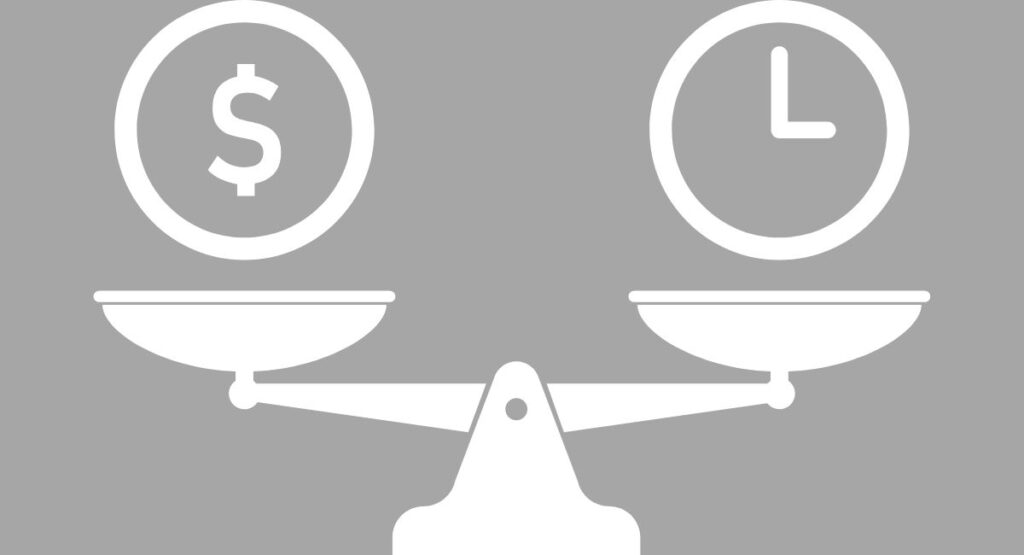
Balancing Content and Monetization
As a blogger, it’s essential to balance content creation and monetization. On the one hand, you want to earn a steady income from your blog, but on the other hand, you want to maintain the quality of your content in the process.
One way to maintain this balance is to create high-quality content valuable to your audience. When your content is engaging, educational, and relevant to your niche, your audience will be more likely to stick around and engage with your content, even if you have monetization elements present.
Another way to balance content and monetization is to be transparent with your audience. Let them know when you have a sponsored post, affiliate link, or other monetization opportunities. Your audience will appreciate your honesty and transparency, and you’ll be able to maintain their trust.
It’s also important to consider the frequency and placement of monetization elements in your content. Too many monetization elements can be overwhelming and turn off your audience, while too few can result in a lower income. A good rule of thumb is to aim for a balance of 70% content and 30% monetization.
Finally, it’s crucial to regularly evaluate your monetization strategy to ensure that it stays within the quality of your content.
Ask yourself questions: Are my sponsored posts relevant to my audience? Am I promoting products or services that I genuinely believe in? By regularly evaluating your monetization strategy and making adjustments as needed, you’ll be able to maintain the balance between content and monetization.
Striking a balance between content creation and monetization is essential for the success of your blog. By focusing on high-quality content, being transparent with your audience, considering the frequency and placement of monetization elements, and regularly evaluating your monetization strategy, you’ll be able to maintain this balance and continue to grow your income as a blogger.

That’s A Wrap
The topic of how bloggers make money is crucial for anyone looking to monetize their blog and turn their passion into a source of income. In this post, we covered the various methods of making money as a blogger, including advertising, selling products, offering services, and developing a monetization plan.
We also discussed the importance of building an audience, creating high-quality content, and balancing content and monetization. One key takeaway from this post is the importance of having a clear monetization strategy and focusing on producing valuable and engaging content that appeals to your target audience.
Additionally, it’s vital to stay ahead of the competition and continually work on growing your income, even if you experience monetization plateaus. Finally, the information and strategies outlined in this post will be helpful for all who want to start monetizing their blogs.
You can turn your blog into a successful and profitable venture by implementing the strategies discussed. So go ahead and start putting these ideas into action, and let’s see how much money you can make as a blogger!






